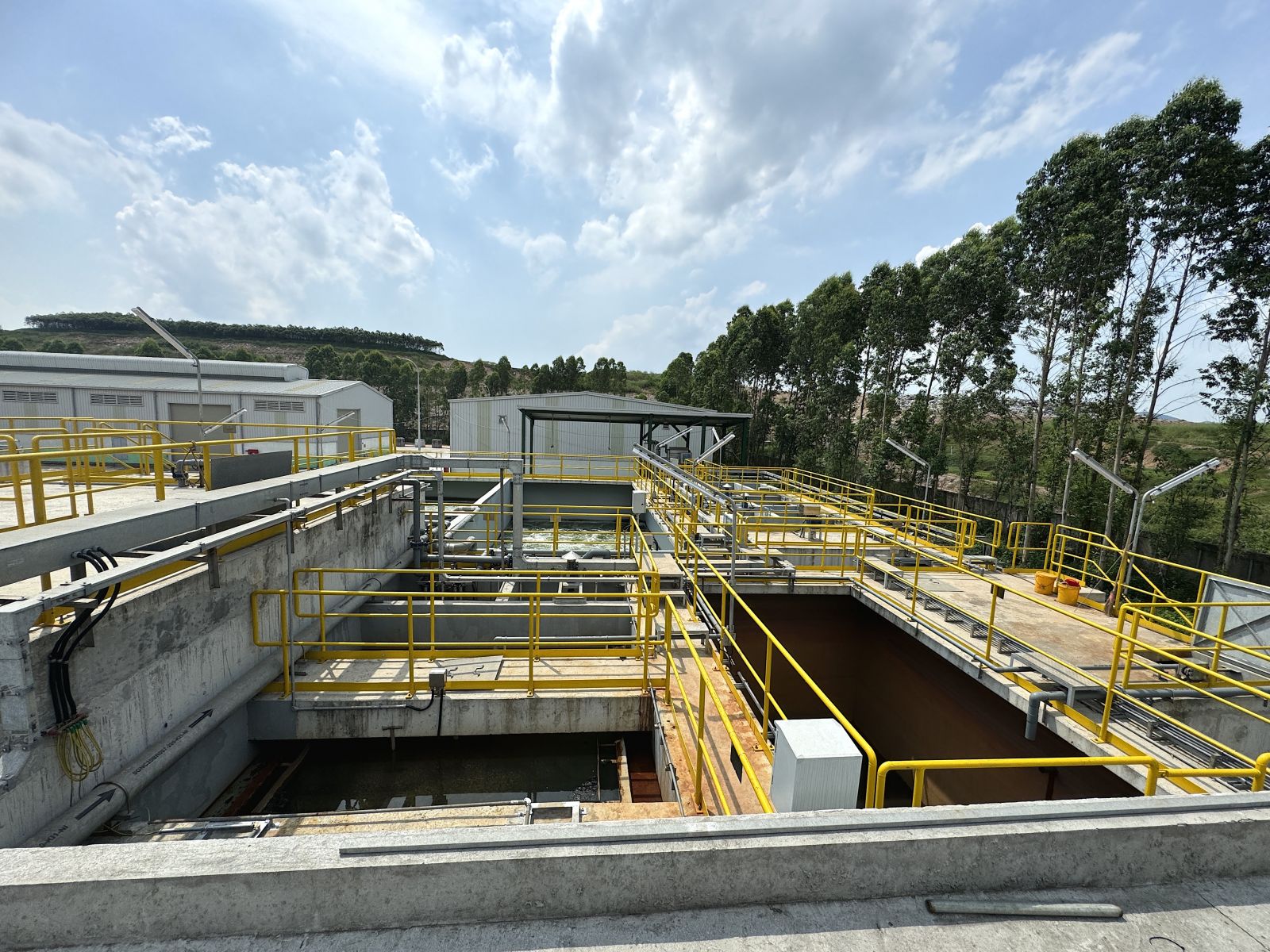The treatment of industrial wastewater has become an urgent issue in response to the rapid expansion of key industries across Vietnam. This surge marks a significant milestone in the nation's journey toward industrialization and modernization. However, the increasing volume of wastewater generated by industrial zones presents serious environmental challenges, calling for greater attention and investment in effective wastewater treatment solutions.
1. Where Does Industrial Wastewater Come From?
Industrial wastewater treatment differs significantly from domestic or manufacturing wastewater treatment. In addition to wastewater generated from machinery and production processes, industrial zones also produce wastewater from office areas and worker living facilities. As a result, the volume is much larger and the composition is far more complex.
The characteristics of wastewater vary depending on the type of industry. For example, during manufacturing, wastewater is generated from cooling systems, material washing, and the use of chemicals. Industries such as metallurgy, chemical production, textiles, and food processing each create distinct types of pollutants. Due to the diverse sources and contamination levels, industrial wastewater requires customized and industry-specific treatment solutions to ensure maximum environmental safety and compliance.

Understanding Industrial Wastewater
2. Main Methods of Industrial Wastewater Treatment
To ensure safe and effective treatment, industrial wastewater is typically processed through three main methods: physical, chemical, and biological.
2.1 Physical Treatment
This method removes suspended solids and impurities through sand filters, activated carbon filters, and oil-water separators. Large debris is filtered out early in the process to prevent clogging, while grease traps remove oils to minimize environmental damage.
2.2 Chemical Treatment
Chemical processes eliminate organic and inorganic compounds using precipitation, oxidation, and neutralization techniques. These help break down harmful substances, making the water safer for further treatment or discharge.
2.3 Biological Treatment
Biological treatment utilizes microorganisms and activated sludge systems to decompose organic pollutants into non-toxic or less harmful byproducts. This includes aerobic and anaerobic biological processes, often implemented in bioreactors or bio-filtration units.
3. Classification of Industrial Wastewater Sources
Depending on the industry, wastewater varies in composition:
- Food Industry: Contains high BOD, suspended solids, pesticides, colorants, and acidic/alkaline substances.
- Power Plants: Generates heavy metals like mercury, lead, chromium, selenium, and toxic gases such as sulfur dioxide.
- Steel and Iron Industries: Includes naphthalene, benzene, cyanide, ammonia, phenol, and acids from heat treatment and surface cleaning.
- Pulp and Paper: Characterized by TSS, BOD, chloroform, dioxins, phenol, and COD.
- Oil and Gas Facilities: Wastewater from washing stations, fuel depots, and power plants may contain hydrocarbons, lubricants, detergents, and sludge.
4. Dai Nam’s Standard-Compliant Wastewater Treatment Process
We implement cutting-edge wastewater treatment processes aligned with QCVN 40:2011/BTNMT standards for industrial parks.
4.1 Collection and Sand Settling Tank
After preliminary treatment, wastewater flows into the collection tank. To eliminate large solid waste, the system channels wastewater through a screening unit that captures debris that could clog pipes. These materials are routinely collected and removed.
4.2 Oil Separation Tank
Before entering the main treatment system, wastewater is pumped into a grease trap, which uses gravity to separate and remove smaller particles, particularly oils and greases. These substances rise to the surface and are effectively skimmed off, reducing the risk of environmental contamination.
4.3 Equalization Tank
This tank is designed with a large retention time to regulate flow rate and pollutant concentration, especially during peak hours. It stabilizes wastewater conditions, reduces the risk of overload, and allows for easier maintenance and repair of the system.
4.4 Anoxic Tanks 1 & 2
These tanks facilitate the denitrification process, converting nitrates and nitrites into nitrogen gas, which is then released into the atmosphere. Activated sludge and wastewater are recirculated from the aerobic tank to maintain optimal biomass levels. The process is enhanced by submersible mixers that blend the wastewater with microbial sludge, improving treatment efficiency.
Denitrification equation using bsCOD (biodegradable soluble Chemical Oxygen Demand):
C₁₀H₁₉O₃N + 10 NO₃ → 5 N₂ + 10 CO₂ + 3 H₂O + NH₃ + 10 OH⁻
4.5 Aerobic Biological Tanks 1 & 2
Aeration is provided to supply oxygen for microorganisms, which break down organic matter into simpler inorganic compounds. To prevent biomass loss and maintain microbial health, sludge is partially recirculated to the anoxic tanks. The treated water then flows into the sedimentation tank.
4.6 Settling Tank
Using gravity, this tank separates sludge from treated water. The clarified water is collected through a weir system and directed to the disinfection stage. Settled sludge is either returned to the anoxic tank or sent to the sludge thickening unit.
4.7 Disinfection Tank
To eliminate any remaining harmful microorganisms, the disinfection tank uses chlorine (NaOCl). This process disrupts microbial metabolic activity, ensuring the effluent meets QCVN 40:2011/BTNMT, Column A discharge standards before release into receiving waters.
4.8 Sludge Holding Tank
This tank stabilizes sludge by reducing organic matter and increasing solid content. It prepares the sludge for dewatering, making it easier to transport and handle.
4.9 Sludge Dewatering Press
The sludge is processed through a dewatering press, which removes excess water. Cationic polymer is used as a binding agent to enhance dewatering efficiency. The final dewatered sludge is transported to a centralized treatment facility for safe disposal or further processing.
5. Why Choose Dai Nam for Industrial Wastewater Treatment?
Partnering with Dai Nam Environment means choosing a provider that guarantees both efficiency and quality in industrial wastewater treatment. With years of experience, our team of highly skilled and knowledgeable experts is committed to delivering the most optimal and tailored solutions for each client.
We continuously adopt and apply cutting-edge wastewater treatment technologies, including SBR, MBR, MBBR, and AAO systems, to enhance treatment performance while minimizing operational costs.
Moreover, Dai Nam strictly complies with Vietnamese environmental regulations and legal standards, giving businesses complete peace of mind. Our support doesn't end at system installation — we offer comprehensive operation and maintenance services to ensure long-term system stability and reliability.
By choosing Dai Nam, your business gains not only a high-performance wastewater treatment solution, but also a reliable and professional long-term partner.
